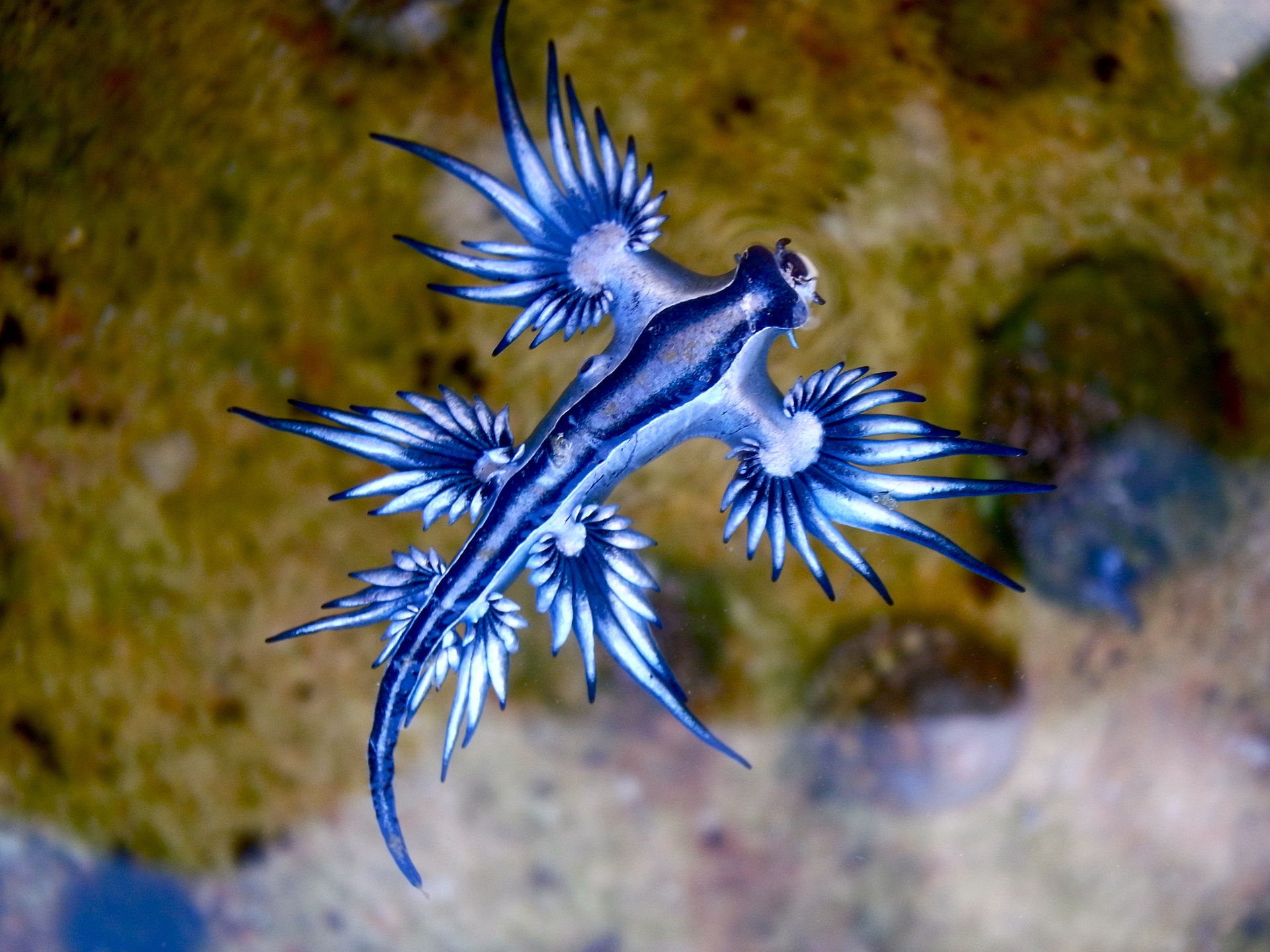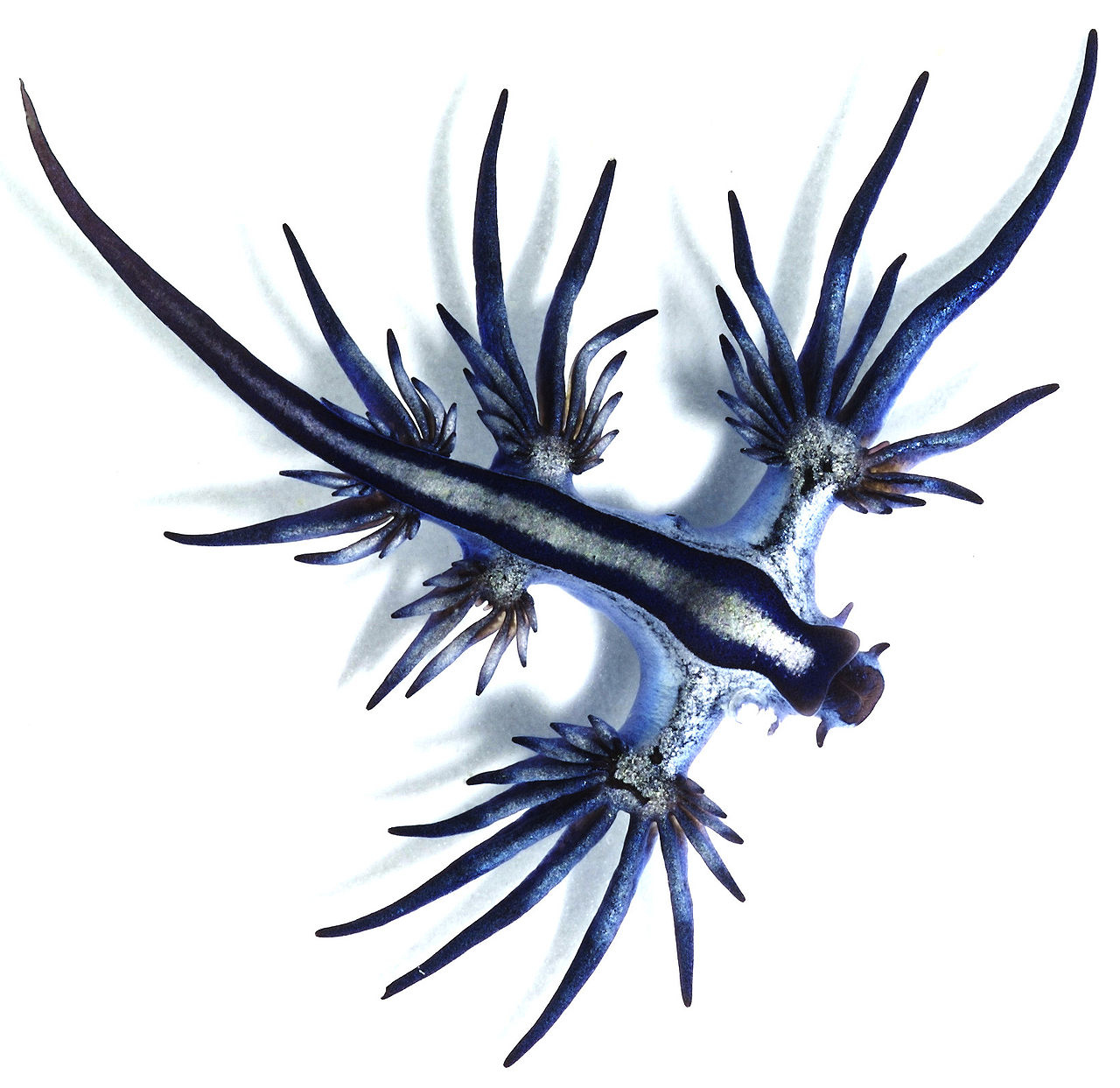
Since early May, visitors to the Padre Island National Seashore off the coast of South Texas have been discovering specimens of the rare blue dragon, or Glaucus atlanticus. Though the name evokes images of flying, fire breathing monsters, the delicate creatures are a type of sea slug that spend their lives in the temperate and tropical waters of the Atlantic, Pacific, and Indian Oceans.
However, while the mollusks, which typically measure just three centimeters long, may not look as fierce as the legendary mythical creatures, they are not to be taken lightly. The sea slugs have the unique ability to store the stingers of their favorite prey — the jellyfish-like Portuguese man o' wars — and use them for defense when touched or disturbed. Even worse, blue dragons concentrate the stingers together, making their stings even more painful than those inflicted by the Portuguese man o' wars.

Blue dragons, which spend their lives floating in the ocean waves on their backsides, use their coloring to their advantage. The vibrant blue underbelly provides a perfect camouflage in the water and helps deter airborne predators, while the dull gray backside seamlessly blends in with the ocean's surface, keeping the sea slugs hidden from potential predators under the sea.
The park officials, who have never encountered the stunning blue dragons in the area before, are unsure why so many are suddenly washing ashore. Their advice to visitors fortunate enough to see them? "Be amazed as they are a rare find, but also keep your distance!"
Resources: CNN.com, Padre Island National Seashore Facebook,
